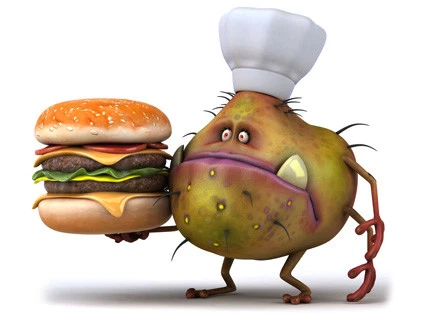Probiotic, Prebiotic, and Synbiotic Supplements … Huh?
Probiotic, Prebiotic, and Synbiotic Supplements … Huh?
Author: Mark Parkinson BsPharm: President AFC-CE
Credit Hours 1- Approximate time required: 60 min.
Educational Goal
Teach caregivers about Probiotic, Prebiotic and Synbiotic Supplements and there use in caregiving
Educational Objectives
Define the terms probiotics, prebiotics and synbiotics
Tell how they are regulated by the FDA
Show the difference between beneficial bacteria and harmful bacteria
Delineate the beneficial effects of the gut microbiome
List ways to incorporate probiotics into in home caregiving
Procedure:
Read the course materials. 2. Click on exam portal [Take Exam]. 3. If you have not done so yet fill in Register form (username must be the name you want on your CE certificate). 4. Log in 5. Take exam. 6. Click on [Show Results] when done and follow the instructions that appear. 7. A score of 70% or better is considered passing and a Certificate of Completion will be generated for your records.
Disclaimer
The information presented in this activity is not meant to serve as a guideline for patient management. All procedures, medications, or other courses of diagnosis or treatment discussed or suggested in this article should not be used by care providers without evaluation of their patients’ Doctor. Some conditions and possible contraindications may be of concern. All applicable manufacturers’ product information should be reviewed before use. The author and publisher of this continuing education program have made all reasonable efforts to ensure that all information contained herein is accurate in accordance with the latest available scientific knowledge at the time of acceptance for publication. Nutritional products discussed are not intended for the diagnosis, treatment, cure, or prevention of any disease.
Probiotic, Prebiotic, and Synbiotic Supplements … Huh?
According to the National Institute of Health (NIH):
‘The 2012 National Health Interview Survey (NHIS) showed that about 4 million (1.6 percent) U.S. adults had used probiotics or prebiotics in the past 30 days. Among adults, probiotics or prebiotics were the third most commonly used dietary supplement other than vitamins and minerals. The use of probiotics by adults quadrupled between 2007 and 2012. The 2012 NHIS also showed that 300,000 children age 4 to 17 (0.5 percent) had used probiotics or prebiotics in the 30 days before the survey.”
Without question, the word “probiotics” is getting more and more popular in today’s culture. You’re seeing the term everywhere, seemingly describing totally different products. To add to the confusion, you will also hear the terms “prebiotic” and “synbiotic” thrown around. What is a probiotic? What’s it good for? Can foster care providers use them for their residents? Do they need to be charted on a Medication Administration Record (MAR) or do they belong on the menu? Are they a food or are they therapy? We’re going clarify what these words actually mean and how they fit into caregiving.
Definitions
Probiotics are live microorganisms that, when administered in adequate amounts, confer a health benefit to the host.
Prebiotics are nondigestible food components that selectively stimulate the growth or activity of desirable microorganisms.
Synbiotics are products that combine probiotics and prebiotics.
Being Healthy — Good Bugs vs. Bad Bugs
All over your skin and inside your guts are trillions of live microbes, mainly bacteria. They outnumber your own cells by a ratio of 10 to one. Collectively, they used to be called your microflora; now, we refer to them as your microbiome.
We are used to thinking of bacteria as villains, a source of infections and disease. We have labeled bacteria as bad bugs that cause poor health. However, in our gut reside several beneficial species of bacteria that play vital roles in digestion, immunity, and even mental health. These are good bugs that are our symbiotic partners that help us maintain good health.
What do the good bugs do that is so beneficial? To understand how they are beneficial, you first have to know what they do. Think of bacteria as chemical producers with voracious appetites. We can’t digest all the food we eat. The leftover bits and fibers flow into the lower intestinal tract where they come into contact with these little chemical factories. The bacteria produce enzymes that break down the undigested material in a process called fermentation. The bacteria then consume part of the broken-down material and produce chemical byproducts of their own. As a result of all this microbial activity we gain several benefits:
- Bacteria produce nutrients that are essential to good health. They are:
- Vitamin K
- Vitamin B12
- Other B vitamins
- Short-chain amino acids.
- The bacteria that make up our microbiome protect themselves from harmful events. In protecting themselves they also protect us by:
- breaking down toxins that make it to the colon
- killing cancerous cells
- controlling the bad bugs that lead to infections.
- The chemicals produced by the microbiome can be sensed by the enteric nervous system, a large network of nerves that connects the brain to the gut. In essence, the microbes chemically “talk” to the brain.
This “conversation” is implicated as an important factor in many metabolic processes and disorders including:
- mental health issues
- migraine headache resolution
- irritable bowel syndrome (IBS) and other gastrointestinal (GI) disorders.
- Proper bowel function is also dependent on the chemicals produced by the microbiome. The right mix of chemicals can help the stool move through the colon in a normal manner.
The symbiotic relationship between our bodies and our microbiome is very complex, with trillions of interactions per hour. We are just beginning to understand the significance of all these interactions.
What We Know So Far
The vitamins produced in our gut are important in metabolic processes throughout our bodies. The only source of vitamin B12 is from bacterial fermentation. The short-chain amino acids are utilized as a food source for our cells. They also play an important role in muscle function and the prevention of chronic diseases, including certain cancers and bowel disorders. The nervous system in our gut can sense changes in the chemical compensation of the contents of our gastrointestinal (GI) tract, which reports the information directly to the brain. Recent studies have shown that this interaction plays a significant role in how we feel. It can lead to contentment or contribute to depression. By competing for food and living space, the good bugs inhibit the growth of the bad bugs all throughout the body.
There are over a thousand different kinds of bacteria in our microbiome. Different species produce different effects. Too much of one and not enough of another can throw off our metabolism. It’s all a balancing act. Our continued good health depends on a healthy balance of the good bugs in our microbiome, which brings us to why we take prebiotics and probiotics.
Prebiotics — Feeding Our Microbiome
 Just like us, our microbiome needs to be fed a healthy diet. They can only eat what we eat. If we eat a low-fiber and high-fat diet, the balance of our microbiome is affected, with a less-than-optimum outcome. A more favorable microbiome output is produced by a diet rich in fiber and other nutrients. Let’s face it, though: we do not always eat right, and our microbiome is affected. To help compensate, supplement manufacturers are producing a line of products collectively called prebiotics. They are a combination of nondigestible food components that pass through the digestive system to feed the bacteria in our colon. The idea is to selectively stimulate the growth or activity of desirable microorganisms to achieve the optimal outcome for good health. In theory, the idea is sound; in practice, the variability and vast complexity of our microbiome makes desired outcomes much harder to achieve. More research needs to be done.
Just like us, our microbiome needs to be fed a healthy diet. They can only eat what we eat. If we eat a low-fiber and high-fat diet, the balance of our microbiome is affected, with a less-than-optimum outcome. A more favorable microbiome output is produced by a diet rich in fiber and other nutrients. Let’s face it, though: we do not always eat right, and our microbiome is affected. To help compensate, supplement manufacturers are producing a line of products collectively called prebiotics. They are a combination of nondigestible food components that pass through the digestive system to feed the bacteria in our colon. The idea is to selectively stimulate the growth or activity of desirable microorganisms to achieve the optimal outcome for good health. In theory, the idea is sound; in practice, the variability and vast complexity of our microbiome makes desired outcomes much harder to achieve. More research needs to be done.
Caregiving and Prebiotics
The Food and Drug Administration (FDA) treats prebiotics not as a drug, but as a food. As such, the regulations only cover basic nutrition and harmful effects. There is no one guaranteeing that the product contains the correct nutrients any more than they would a bag of carrots.
Health claims cannot be made by the manufacturer of the supplement, so marketing and health claims are done in a roundabout way, mainly through testimonials. If you can trust the person giving the testimonial, you can have a fairly good chance of getting the desired outcome. Otherwise it’s a crapshoot. Health claim testimonials are only good for the specific product that the supposed “expert” has had experience with. There is no guarantee that product A has the same effect as product B, even if the label has the same ingredients. What that means for the caregiver is that the brand of the prebiotic supplements matters. If you want to save money by changing brands you will have to monitor its use for effect.
Prebiotics may not be regulated as a drug, but they are therapy, not food. Caregivers will have to run everything concerning prebiotics by the doctor, including brand changes. It may be easier to simply serve a balanced diet. I suppose that there could be times when a healthy diet is difficult to maintain. My recommendation is to treat prebiotics as another caregiver’s tool to be used with skill and judgment when needed.
Probiotics — Supplementing Your Microbiome
There are all sorts of ways the bacterial makeup of your microbiome can get out of balance. It can range from antibiotic use (killing off good and bad bacteria), a compromised immune system, chronic disease states, poor nutritional choices, and just plain bad luck. Again, supplement manufacturers have stepped up to the plate and offered a solution. Why not take a dose of beneficial bacteria to augment what is already there? And there is scientific evidence that this therapeutic approach actually works.
Fermented foods go as far back as the ancient Greeks, and people of the Middle East have long used them as therapy for a host of human ills. The concept of probiotic supplements was first introduced by Élie Metchnikoff of the Pasteur Institute of Paris in 1907. He noticed that yogurt-eating people of Hungary tended to live longer. He postulated that the good bacteria in the yogurt was a contributing factor for their long life.
Today you can find probiotics in a variety of different products, from food to pills to cosmetic products. The FDA regulates probiotics in several different ways: as a food ingredient, as a supplement, and as a drug. It all depends on how the manufacturer intends their product to be used. Again, you can’t claim a health benefit unless you can prove it scientifically.
Food
Bacterial fermentation is used in the preparation of many foods. Remember the definition of a probiotic: “live” microbes that relay a health benefit. The most common probiotic foods are yogurt, kefir, kombucha, sauerkraut and kimchi. If the product has been pasteurized, all the bacteria has been killed off and it can’t be called a probiotic. Product labeling usually indicates live bacteria and yeast as “active cultured.”
Supplement
You can purchase supplement products containing a collection of good bacterial strains. Probiotics are identified by their specific strain. Product labeling will indicate a bacterial name that will include genus, species and subspecies, if applicable, or they may use a strain nickname.
For example:
Nomenclature for Sample Commercial Strains of Probiotics
Genus Species Subspecies Strain Strain Nickname
Lactobacillus rhamnosus none GG LGG
Bifidobacterium animalis lactis DN-173 010 Bifidus regularis
Bifidobacterium longum longum 35624 Bifantis
Probiotics quantities are measured in colony-forming units (CFU), which indicates the number of viable cells at the time of manufacture. Quantities may be seen as CFU per dose; for example, 1 x 109 for 1 billion CFU or 1 x 1010 for 10 billion CFU. Current labeling standards only require the manufacturer to indicate the total weight of the microorganism. It may include both live and dead cultures. The CFU may also increase or decrease as the product sits on the shelf.
Drugs
There are drug manufacturers that have gone through the rigors of scientifically proving the safety and efficacy of their product to the FDA. Many are over-the-counter products such as Culturelle Digestive Health, VSL#3 and Phillips Colon Health. Dosing is determined by the doctor or as indicated on the package. Doses are usually taken once a day.
Caregiving and Probiotics
Given the trillions of microbes in our gut, the differences between individuals’ microbiomes, and the variability of ingredients in products, the effectiveness of probiotics therapy is hard to determine. Without more research being done, probiotic use as therapy in a care home setting will be limited to certain cases and conditions.
Probiotics are generally considered safe to use with little to no side effects for caregivers to monitor for. Although, for those with compromised immune systems, there is a chance for bacterial overgrowth. Extra monitoring for signs of infection will be required for these types of residents. Changes in bowel habits may also become problematic for caregivers.
 Probiotic foods on the menu are generally not considered therapy any more than prune juice is. It is another tool to be used with skill by the caregiver. Be careful not to cross over the therapy line and use the probiotic food as a way to circumvent the doctor. When in doubt, get the doctor’s approval in writing to cover your tush.
Probiotic foods on the menu are generally not considered therapy any more than prune juice is. It is another tool to be used with skill by the caregiver. Be careful not to cross over the therapy line and use the probiotic food as a way to circumvent the doctor. When in doubt, get the doctor’s approval in writing to cover your tush.
When including probiotic foods on the menu, a few principles to remember are:
- “Active culture” products are the most potent ones.
- Cooking the food will kill the good bugs.
- Serving probiotic foods during antibiotic therapy is a good way of maintaining a healthy microbiome.
- You have to serve the foods in large enough quantities so that a portion of the live microbes make it through the stomach acid and digestive processes of the small intestine.
- Probiotics in larger quantities given over time can and will affect bowel habits. Monitor for cramping, nausea, soft stools, flatulence, and constipation.
The role of probiotics in medicine is a matter of ongoing research. In the future, I believe that you will see doctors using them more often. What research has been done has been very promising in some cases and a total bust in others.
Probiotic effect:
|
Promising outcomes |
No effect |
|
Obesity |
Crohn’s disease |
|
Diabetes |
Ulcerative colitis |
|
Antibiotic-induced diarrhea |
Dysbiosis |
|
High cholesterol |
Hepatic encephalopathy |
|
Irritable bowel syndrome |
Upper respiratory tract infection |
|
Atopic dermatitis |
Pancreatitis |
|
Pediatric acute infectious diarrhea |
Asthma prevention |
According to drugs.com the mechanisms of probiotic actions are:
“probiotics … action may include production of pathogen-inhibitory substances, inhibition of pathogen attachment, inhibition of the action of microbial toxins, stimulation of immunoglobulin A, and trophic effects on intestinal mucosa.”
There is also good evidence that the microbiome “talks” to the brain via the gut-brain axis of the enteric nervous system (ENS). Manipulation of the microbiome is currently being developed as therapy for mental health conditions. Watch for future developments to come.
Synbiotics
I haven’t covered synbiotics a whole lot. In my opinion, I don’t know how effective they would be beyond the obvious convenience of taking one product versus two. I think it’s just a marketing ploy, but they might have their uses. Anyway, we covered the basic principles in the prebiotic and probiotic sections.
I find it very ironic that we as health professionals try so hard to prevent the spread of bacteria, just to turn around and recommend to our patients that it might be helpful to consume more bacteria. Regardless of the irony, probiotic effectiveness has been proven in so many cases that it is now part of our culture. Foster care providers can utilize the concept of good bugs to aid in their caregiving efforts. It’s another tool for the caregiver’s toolbox to be used with skill and care.
As always, good luck in your caregiving efforts.
Mark Parkinson, BSPharm
References:
Probiotics: What You Need to Know. National Center for Complementary and Integrated Health, NIH. 2019. https://nccih.nih.gov/health/probiotics/introduction.htm
Probiotics Fact Sheet for Health Professionals. National Institute on Health Office of Dietary Supplements. June 26, 2019. https://ods.od.nih.gov/factsheets/Probiotics-HealthProfessional/
Probiotic. Wikipedia. Dec.7 2019. https://en.wikipedia.org/wiki/Probiotic
Probiotics. Drug.com Mar. 30 2019.https://www.drugs.com/npp/probiotics.html
Prebiotics, probiotics and your health. MayoClinc. 2019. https://www.mayoclinic.org/prebiotics-probiotics-and-your-health/art-20390058
The Microbiome. Harvard T.H. Chan School of Public Health. 2019. https://www.hsph.harvard.edu/nutritionsource/microbiome/
Exam Portal
click on [Take Exam]
Purchase membership here to unlock Exam Portal.
|
|
|
|
|
*Important*
Registration and login is required to place your name on your CE Certificates and access your certificate history.
Username MUST be how you want your name on your CE Certificate.








